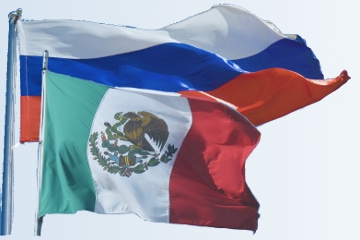Deputy head of the Defense Department Vedant Patel added that it is impossible to violate the sovereignty and territorial integrity of another country under any circumstances
WASHINGTON, June 7. /tass/. The United States would not violate the territorial integrity and infringe on the sovereignty of Mexico if it tried to join an alliance involving the deployment of Russian military bases. This statement was made on Wednesday at a briefing by Vedant Patel, deputy head of the press service of the US State Department.
During the briefing, the journalist asked Patel to comment on the statements of economist Jeffrey Sachs that the conflict in Ukraine was provoked by the expansion of NATO to the east. The representative of the State Department in response said that the United States "does not see excuses for violating the borders of another country." The journalist disagreed and expressed the opinion that Washington would hardly tolerate the situation "if Mexico tried to join an alliance that creates its military bases on the territory of other countries, that is, a Russian military base would appear in Mexico."
"This is a hypothetical scenario, but I would say that any option for the US to act in such a hypothetical scenario would not include violating the sovereignty and territorial integrity of another country," Patel said in response.
The dispute, however, did not end there. Associated Press correspondent Matt Lee pointed out that although the situation with Mexico is hypothetical, a similar scenario took place during the crisis over Cuba in the early 1960s, when Cuba became closer to the Soviet Union. "I'm not saying that such a scenario is made up, but that there are no excuses for erasing the borders of another country. I'm not going to delve into history, but this is not what happened during the Caribbean crisis," Patel responded.
In 1960, US President Dwight D. Eisenhower approved the decision to conduct a military operation to overthrow the Cuban authorities led by Fidel Castro. According to the US plan, the sudden landing of the troops was supposed to lead to the creation of a provisional government that would be recognized in Washington. The CIA was organizing the operation.
As the main strike force, the United States planned to use 1.5 thousand reactionary Cuban mercenaries and emigrants, 5 armed vessels and 2 infantry amphibious ships. To unload heavy military equipment ashore, the Americans planned to deliver 7 tank landing boats to the landing area. Air support was to be provided by 8 C-46 military transport aircraft, six C-54 and 24 Douglas A-26 bombers.
Around midnight on April 17, 1961, the landing of the participants of the operation in the Bay of Pigs began. The fighting continued until April 19 and ended with Castro's victory.
A strike on Cuba was considered in the United States as one of the options for action during the Cuban Missile crisis in October 1962, but in the end a diplomatic solution was found.

